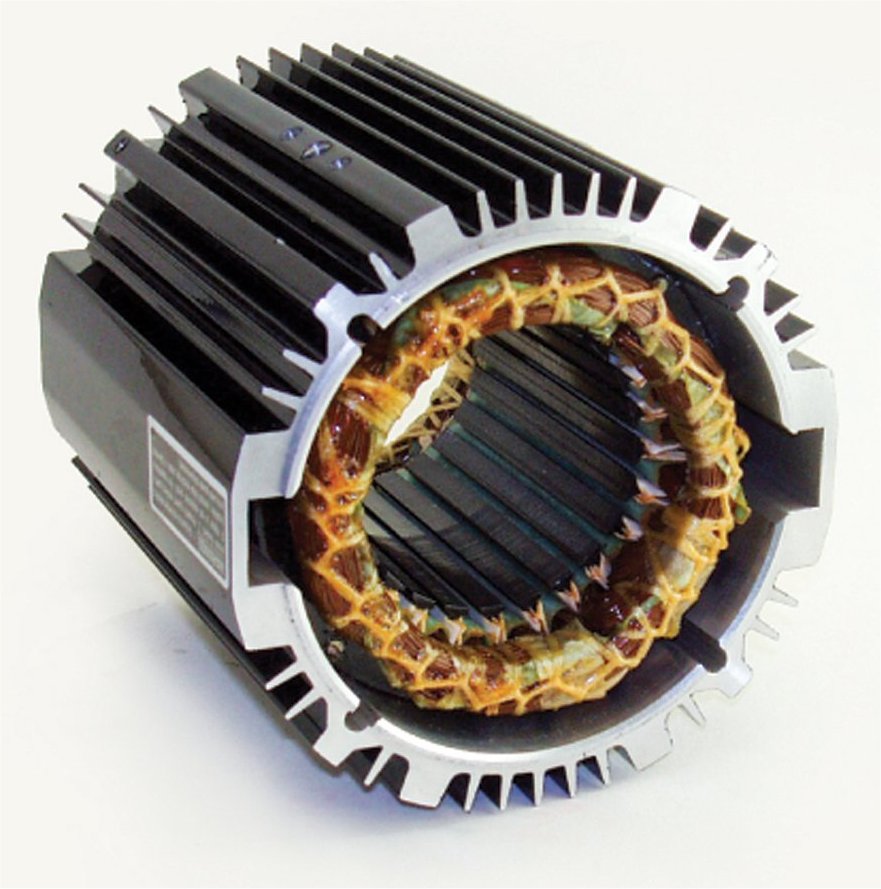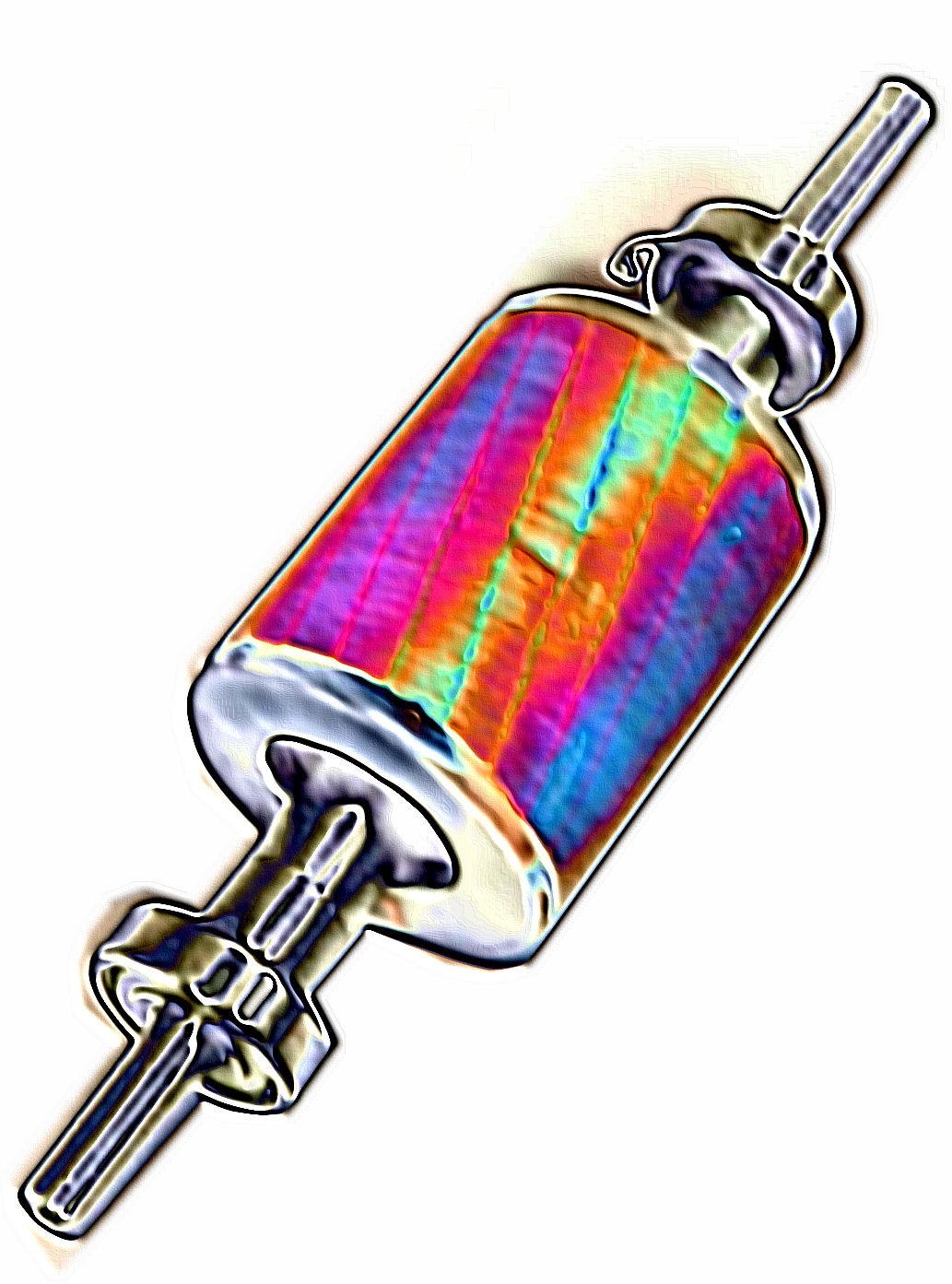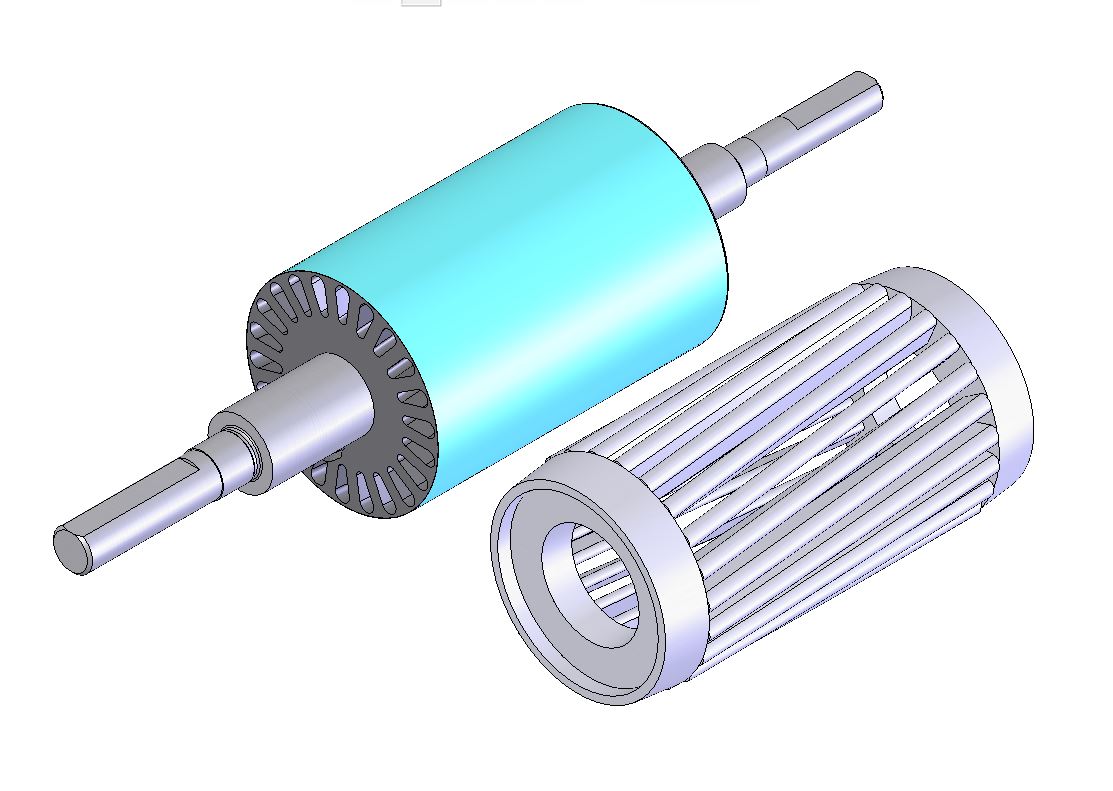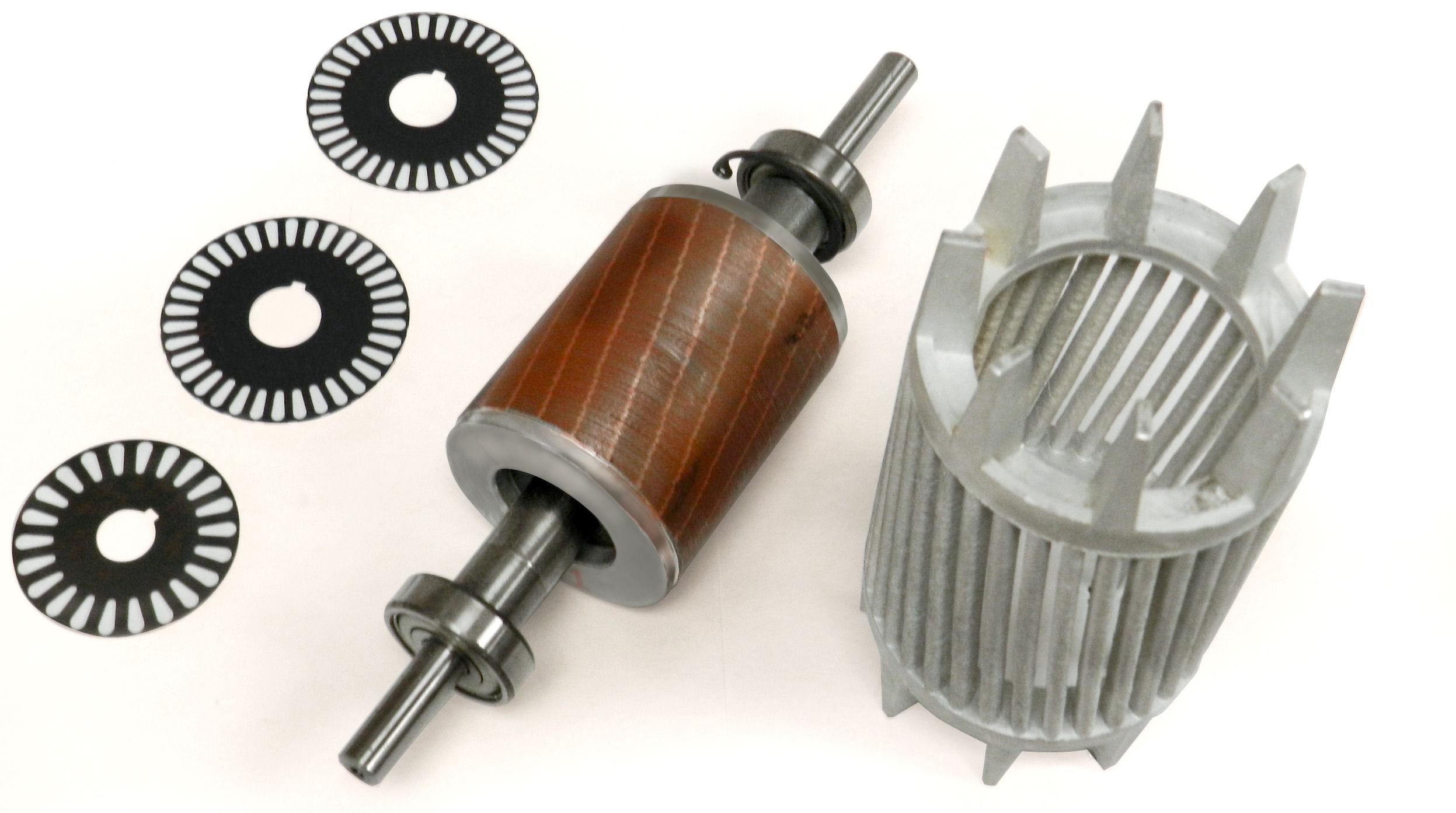Why is it called a “squirrel cage rotor?”: Most fractional horsepower (FHP) AC induction motors utilize a die cast rotor design that consists of a skewed lamination stack with die cast rotor bars and end rings. The common term for this rotor design is “squirrel cage”, because if you remove the steel laminations after the rotor was die cast, you’ll end up with a skeleton that looks much like a hamster wheel. Our guess is that back in the day when this term was coined, more people had squirrels as pets than hamsters. 
 In an AC induction motor, the stator winding sets up a magnetic field which reacts with the current-carrying conductors of the rotor to produce rotational torque. The rotor currents are induced in the rotor conductors by the stator’s changing magnetic field, rather than by means of a commutator and brushes (like in a PMDC motor). This induction action is the central operating principle of AC induction motors. The essential operating characteristics of AC induction motors will vary according to: 1) winding types (split-phase, shaded-pole, three-phase, etc.), and 2) the number of phases, the frequency and the voltage of the power source.
In an AC induction motor, the stator winding sets up a magnetic field which reacts with the current-carrying conductors of the rotor to produce rotational torque. The rotor currents are induced in the rotor conductors by the stator’s changing magnetic field, rather than by means of a commutator and brushes (like in a PMDC motor). This induction action is the central operating principle of AC induction motors. The essential operating characteristics of AC induction motors will vary according to: 1) winding types (split-phase, shaded-pole, three-phase, etc.), and 2) the number of phases, the frequency and the voltage of the power source.
 The rotor of a typical induction motor is constructed from a series of steel laminations, each punched with slots or holes along its periphery. When laminations are stacked together and riveted, these holes form channels which are filled with a conductive material (usually copper or aluminum) and short-circuited to each other by means of conducting end rings. The conductors are typically formed by die-casting. In open frame AC induction motors, the die cast rotor usually includes integral fan blades which allow for efficient and cost effective motor cooling. The common term for this type of rotor is “squirrel cage” (because of resemblance to the runway of an old-fashioned squirrel cage). It is an inexpensive and common form of AC induction rotor.
The rotor of a typical induction motor is constructed from a series of steel laminations, each punched with slots or holes along its periphery. When laminations are stacked together and riveted, these holes form channels which are filled with a conductive material (usually copper or aluminum) and short-circuited to each other by means of conducting end rings. The conductors are typically formed by die-casting. In open frame AC induction motors, the die cast rotor usually includes integral fan blades which allow for efficient and cost effective motor cooling. The common term for this type of rotor is “squirrel cage” (because of resemblance to the runway of an old-fashioned squirrel cage). It is an inexpensive and common form of AC induction rotor.
As the rotating field sweeps past the bars in the rotor, an induced current is developed. Since the flow of current in a conductor sets up a magnetic field with a corresponding polarity, an attraction will result between the rotating magnetic field of the stator and the induced field in the rotor. Rotation results from the rotor’s attempt to keep up with the rotating magnetic (stator) field. The rate of change at which the lines of flux cut the rotor determines the voltage induced. When the rotor is stationary, this voltage is at its maximum. As rotor speed increases, the current and corresponding torque decreases. At the point of synchronous speed (speed of the rotating field), the induced current and developed torque both equal zero.

The rotor in a non-synchronous AC induction motor will always operate at some speed less than synchronous unless it is aided by some supplementary driving device. This lag of the rotor behind the rotating magnetic field is called “slip”, and is expressed as a percentage of synchronous speed:

In designing rotors for induction motors, the shape and dimensions of the slots have a demonstrable effect on the performance characteristics of the motor. The slot (bar) shape can be seen in the lamination examples in the photo. Another design factor common to most squirrel cage induction rotors is the deliberate “skewing” of the slots (positioning the slots at a slight angle to the shaft) to avoid cogging action and wide variations in starting torque which may result when bars are placed parallel to the stator slots. It is also important to note that single-phase AC motors require an auxiliary starting scheme. See the Bodine Gearmotor Handbook for more information on design principles and various motor designs.
(Below photo shows two different rotor laminations on the left, the finished AC induction motor rotor with bearings pressed on the shaft, and the squirrel cage after the lamination steel was dissolved with nitric acid.)

Copyright Bodine Electric Company © 06/2016. All rights reserved.